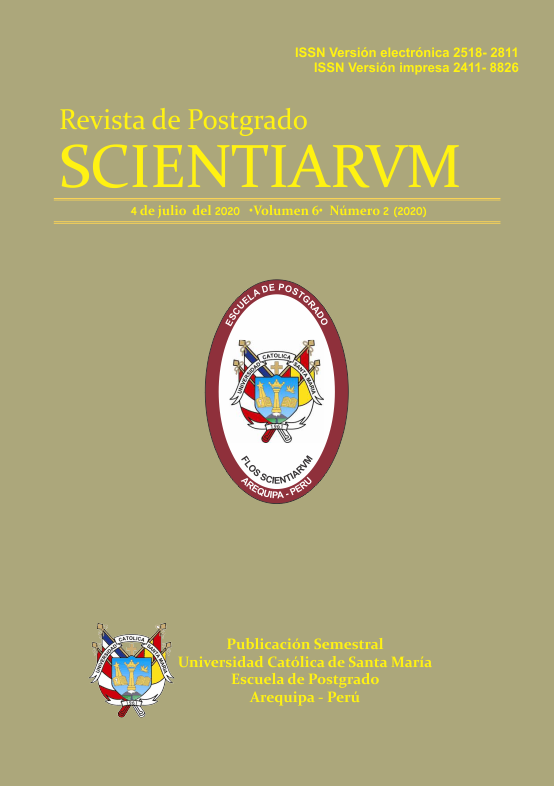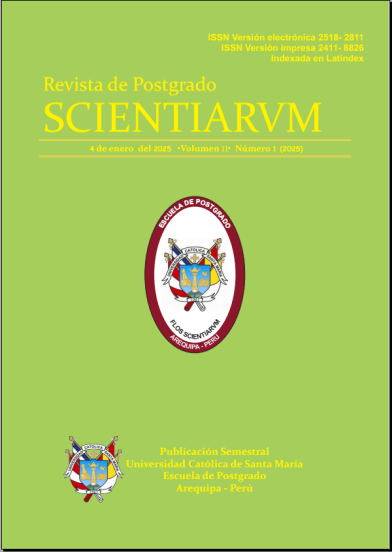AUTOLESIONES DENOMINADAS CUTTING EN ADOLESCENTES DE AREQUIPA
CUTTING SELF-INJURIES IN ADOLESCENTS OF AREQUIPA
Francis Wendell Jácobo Valdivia1, Arlett K. Jácobo Valdivia2, María A. Manrique Aguirre3
- Docente Universidad Continental. Arequipa - Perú.
- Psicóloga del C.E. Innova School Arequipa - Perú
- Estudiante de maestría Universidad Nacional de San Agustín. Arequipa - Perú
RESUMEN: El objetivo de esta investigación fue analizar las experiencias y el mundo subjetivo de la conducta autolesiva denominada “Cutting” en adolescentes de Arequipa. La muestra fue de 6 adolescentes hombres y mujeres entre los 14 y 17 años. La metodología fue abordada desde un paradigma cualitativo, trabajando con el método Fenomenológico, el cual permitió analizar las vivencias, emociones, experiencias, sentimientos y pensamientos de los adolescentes frente al “Cutting” mediante la observación participante y entrevista a profundidad. La Investigación se rige desde un enfoque Cognitivo – Conductual. A los adolescentes se les aplicó una entrevista estructurada y una ficha sociodemográfica para la obtención de datos. Los Resultados mostraron en detalle el mundo subjetivo, las experiencias, las características y los fenómenos asociados al Cutting, mostrando que los adolescentes se autolesionan por problemas familiares y los varones para manipular y llamar la atención de la familia y pareja, el inicio de la conducta autolesiva se da a partir de los 13 años, con una duración de 1 a 3 años, las conductas encontradas son de impulsividad, agresividad, mostrando emociones de arrepentimiento, animo deprimido, rasgos ansiosos, a la vez sintiendo alivio y tranquilidad; las consecuencias que encontraron son de discriminación social, marcas y cicatrices en el cuerpo, baja autoestima, ausentismo escolar y bajo rendimiento académico
Palabras clave: Autolesión, Cutting Enfoque Cognitivo conductual, Adolescencia y autolesiones.
ABSTRACT: The objective of this research was to analyze the experiences and the subjective world of self-injurious behavior called “Cutting” in adolescents from Arequipa. The sample consisted of 6 male and female adolescents between the ages of 14 and 17. The methodology was approached from a qualitative paradigm, working with the Phenomenological method, which allowed to analyze the experiences, emotions, experiences, feelings, and thoughts of adolescents in front of the "Cutting" through participant observation and in-depth interview. The Research is governed from a Cognitive - Behavioral approach. A structured interview and a sociodemographic record were applied to the adolescents to obtain data. The Results showed in detail the subjective world, experiences, characteristics and phenomena associated with Cutting, showing that adolescents self-harm due to family problems and males to manipulate and attract the attention of the family and partner, the beginning of the behavior Self-harm occurs from the age of 13, with a duration of 1 to 3 years, the behaviors found are impulsivity, aggressiveness, showing emotions of regret, depressed mood, anxious features, at the same time feeling relief and tranquility; the consequences they found are social discrimination, marks and scars on the body, low self-esteem, school absenteeism and poor academic performance.
Keywords: Self-injury, Cutting Cognitive Behavioral Approach, Adolescence and self-harm.
Revista Seleccionada
Julio 2020 Volumen 6 - Número 2 P 27-31
DOI: 10.26696/sci.epg.0117
Enlaces
CIENCIAS SOCIALES Y HUMANIDADES
TENDENCIA DEL COWORKING EN AREQUIPA-PERÚ
CIENCIAS BIOLÓGICAS Y DE SALUD
MICROBIOMA: AMIGO O ENEMIGO EN PACIENTES CON COVID - 19
RETINOPATÍA HIPERTENSIVA ASOCIADA CON ENFERMEDAD HIPERTENSIVA DEL EMBARAZO EN ALTURA
AUTOLESIONES DENOMINADAS CUTTING EN ADOLESCENTES DE AREQUIPA
EXPRESIÓN DE P53 EN CULTIVO DE CÉLULAS MADRE AISLADAS A PARTIR DE QUISTE RADICULAR INFLAMATORIO


